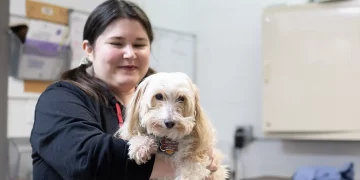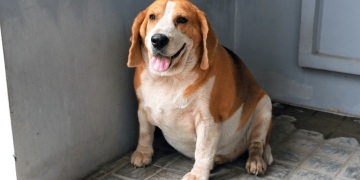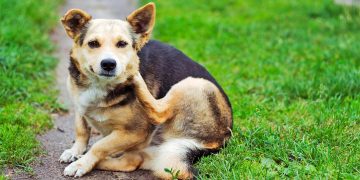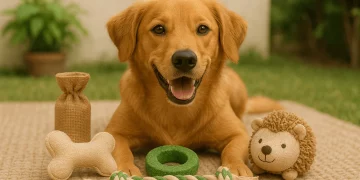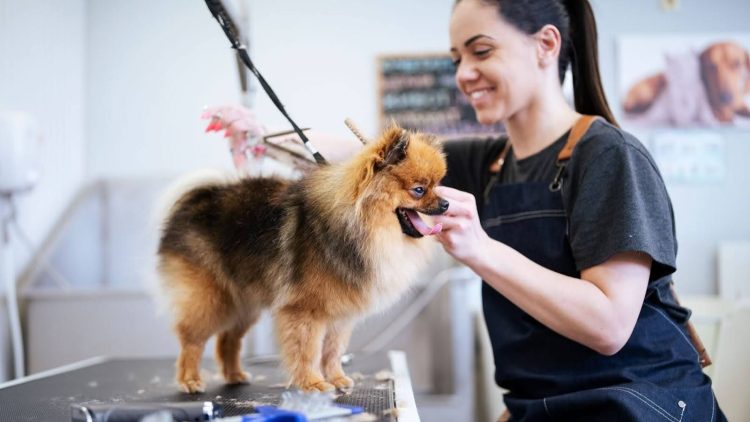Most pet owners know the sound all too well: the sharp click of nails on hardwood or tile as their dog trots across the room. Or perhaps they’ve seen their cat struggle to walk gracefully, claws slightly extended on every step. But what many don’t realize is that those overgrown nails aren’t just noisy or unsightly—they’re quietly influencing posture, joint health, and long-term mobility. Nail trimming isn’t simply a grooming habit; it’s a foundational part of orthopedic wellness. When nails are too long, they change how your pet walks, shifts their weight, and even distributes pressure through the joints. Over time, this leads to unnatural postures that can cause or worsen musculoskeletal problems. Understanding how nail length affects the biomechanics of walking—and establishing a routine that suits your pet’s breed and size—can help prevent lifelong orthopedic issues before they start.
How Overgrown Nails Disrupt Natural Gait
A healthy gait is one where the paw pads make even contact with the ground, and the limb joints—wrist, elbow, shoulder or ankle, knee, hip—work in smooth, balanced motion. But overgrown nails interfere with this alignment. As nails grow, they begin to make contact with the ground before the pads do. This small change alters how your pet walks: they compensate by shifting their body weight backwards or outwards, lifting their toes awkwardly, or shortening their stride to avoid discomfort.
The consequences are both immediate and cumulative. The pressure from long nails pushes the toe joints upward or sideways, leading to unnatural angling in the digits. The carpal (wrist) and tarsal (ankle) joints absorb more shock than intended, causing early joint strain. In cats, where nails are retractable, long claws that remain extended can force unnatural toe spread and change how the paw lands during walking or jumping. Over time, this can affect the spine, shoulder positioning, and even tail carriage.
Joint Stress, Muscle Tension, and the Domino Effect
One of the most subtle but serious impacts of long nails is the domino effect it has on a pet’s musculoskeletal system. When a dog or cat shifts their weight to avoid nail discomfort, their entire posture changes. Overcompensation often begins at the toes and climbs through the limbs to the spine and shoulders.
For example, in a medium-sized dog, long nails cause outward rotation of the front paws. This turns the elbows in, shifts weight onto the outside of the shoulders, and tightens the back muscles. Over time, this can lead to:
- Chronic shoulder tightness
- Spinal misalignment
- Increased risk of arthritis in knees and hips
- Painful gait patterns in senior years
In cats, even small postural changes from overgrown claws can cause tight hamstrings, hip tension, and reluctance to leap or stretch—behaviors owners often dismiss as “just getting older.”
The worst-case scenario is long-term compensatory patterns that become semi-permanent. If nails stay too long for too long, the pet’s body adjusts its structure around the dysfunction. This not only makes posture correction harder later—it can result in irreversible joint or ligament damage.
How Nail Trimming Restores Natural Posture
Trimming nails resets the paw’s relationship to the ground. It allows the paw pads to make full contact without interference, encouraging a more natural stance. After a proper trim, dogs walk with a longer, smoother stride. Cats stop extending their claws to walk, and instead return to retracted-toe movement, enabling light, balanced steps.
In as little as 24–48 hours after a trim, you may notice:
- Increased flexibility in shoulder and hip movement
- Longer duration walks or play sessions without fatigue
- Reduced paw licking or limping
- Straighter spine while walking or standing
Regular nail maintenance keeps your pet’s paws in a “neutral” orthopedic zone, where joints are aligned and pressure is evenly distributed.
Trimming Frequency by Species and Size
Trimming needs vary greatly by breed, size, activity level, and even the type of surface your pet walks on daily. Hard pavement wears nails down more than carpet or grass, so indoor pets or small breeds tend to need more frequent trims.
Here’s a practical frequency guide:
Small Dogs (under 20 lbs)
Every 2–4 weeks. Their light weight means less natural wear, especially if they’re mostly indoors. Breeds like Chihuahuas, Yorkies, and Pomeranians often require the most frequent trims.
Medium Dogs (20–50 lbs)
Every 3–5 weeks. Dogs in this range usually get some natural filing outdoors, but still need consistent maintenance to avoid posture issues.
Large Dogs (50+ lbs)
Every 4–6 weeks. Their heavier bodies can sometimes help keep nails shorter on rough terrain, but once nails start tapping the ground, posture shifts occur quickly.
Cats (indoor)
Every 2–4 weeks. Cats don’t wear down nails naturally indoors, and their claws can grow sharp and even curl into the paw pad if left unchecked.
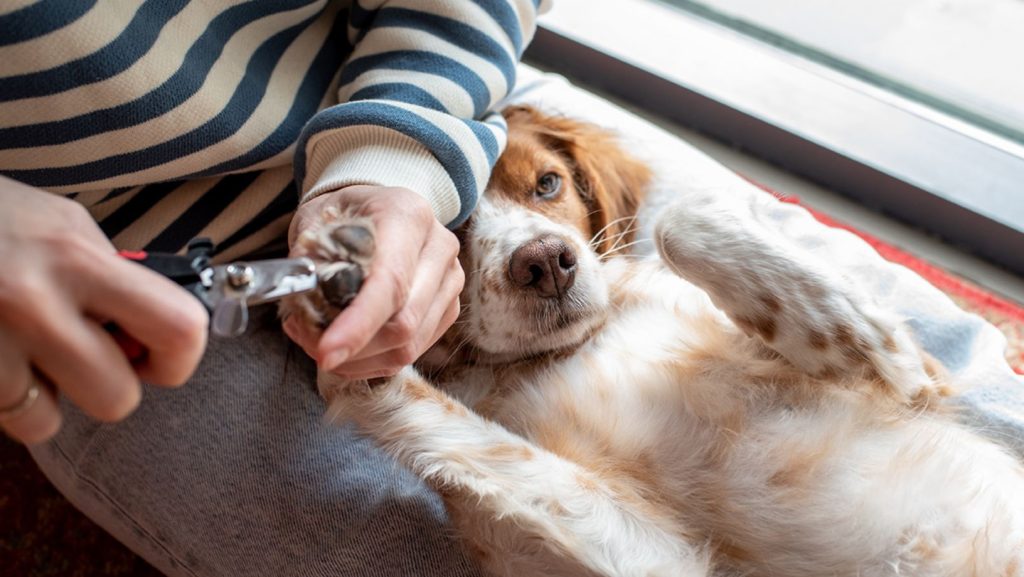
Cats (indoor/outdoor)
Every 4–6 weeks. Outdoor activity may file some nails, but not all. Regular checks are important.
Senior Pets
Regardless of size, older pets need trims every 2–3 weeks. They tend to walk less, file less, and suffer more joint consequences from posture imbalances.
Consistency is key. Letting nails grow too long between trims means the quick (the sensitive part inside the nail) also grows, making future trims harder and more painful. Regular maintenance helps the quick recede gradually, allowing shorter and healthier nails over time.
Breed-Specific Considerations
Certain breeds are more sensitive to nail length than others. For example:
- Sighthounds like Greyhounds and Whippets have delicate feet that lose natural alignment quickly with long nails.
- Herding breeds like Border Collies, with their intense movement patterns, are highly affected by joint stress caused by overgrowth.
- Toy breeds with bowed legs or short limbs are particularly vulnerable to spinal curvature and arthritis when posture changes occur.
- Polydactyl cats (with extra toes) need special attention, as extra digits can grow nails that curl inward, affecting paw shape and balance.
Understanding your pet’s breed or build can help you prioritize nail care more specifically and proactively.
Behavioral Clues Your Pet Needs a Trim
Sometimes pets tell us they need nail care—even before the click-click sound starts. Watch for:
- Hesitation to walk on tile or hardwood
- Sitting or lying down more than usual
- Paw licking or chewing
- Dragging paws or toe flicking
- Leaning backward or shifting weight to rear legs
- Reduced jumping or stretching in cats
These small shifts in daily behavior are often subtle indicators of discomfort tied to poor paw mechanics.
Integrating Nail Trimming Into Wellness Routines
Regular nail trimming shouldn’t be a traumatic chore—it should be part of your pet’s health maintenance. To help your pet accept and even enjoy it:
- Start young. Handle paws gently and reward touch to desensitize.
- Use quiet, well-lit spaces to trim. Stressful environments cause fidgeting and accidents.
- Invest in high-quality clippers or grinders suited to your pet’s size.
- Use a file or grinder to smooth edges afterward to avoid catching on fabric.
- Pair the experience with praise, treats, or a walk right after.
If trimming at home causes anxiety, seek out a professional groomer or vet tech who can help. Some clinics offer walk-in trim services for a low fee, making it easy to stay consistent.
Nail Health = Posture Prevention
What surprises many owners is how directly nail health relates to skeletal and muscular health. Just as poorly fitting shoes can cause back pain in humans, overgrown nails can cause chain reactions in pets—from hunched shoulders to worn joints and tight hips. By trimming regularly, you don’t just prevent cracked nails or furniture scratches—you protect your pet’s movement, their comfort, and their long-term mobility.
In 2025, more vets and animal therapists emphasize paw and nail care as part of routine preventive health, especially for aging pets. Owners who once thought of nail trimming as a cosmetic detail now understand it as a foundational practice for posture correction and arthritis prevention.
Final Thoughts: Small Tool, Big Impact
A nail clipper may seem like a small item in your pet care toolkit, but its role in supporting orthopedic health is massive. By trimming nails regularly and mindfully, you ensure your dog or cat can move naturally, balance correctly, and avoid the cascade of posture-related injuries that begin with a few millimeters of overgrowth. It’s a small act with big, lasting effects. A better stride, a straighter spine, and a more comfortable life can all start with something as simple as keeping nails off the floor—and letting the paws meet the ground as nature intended.













